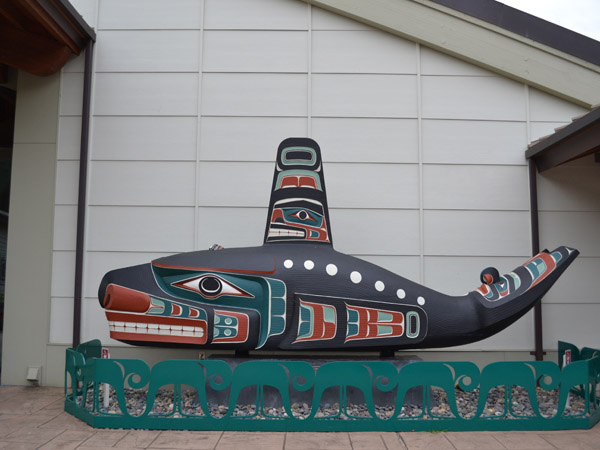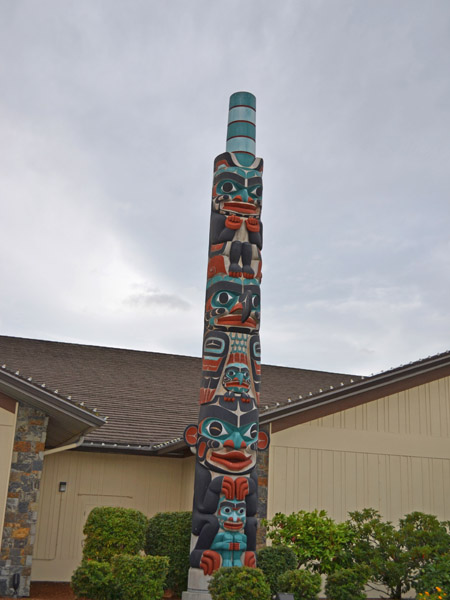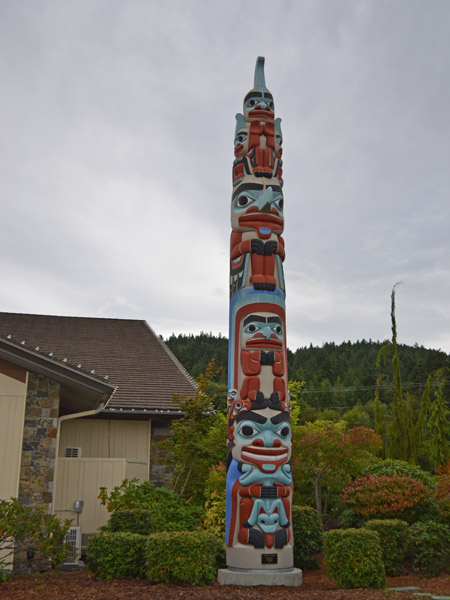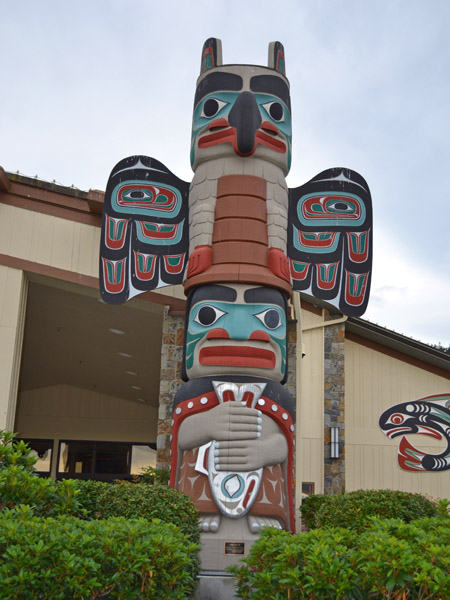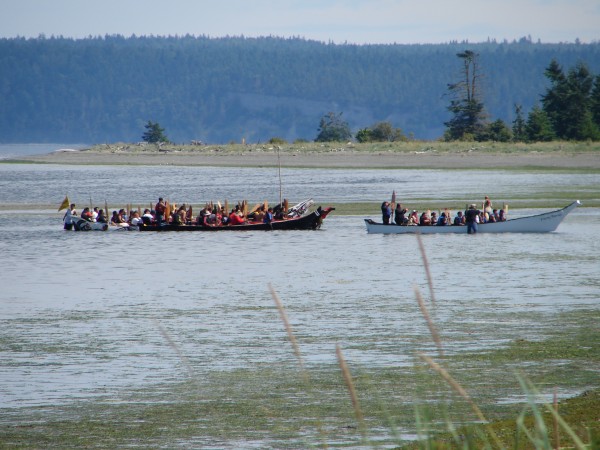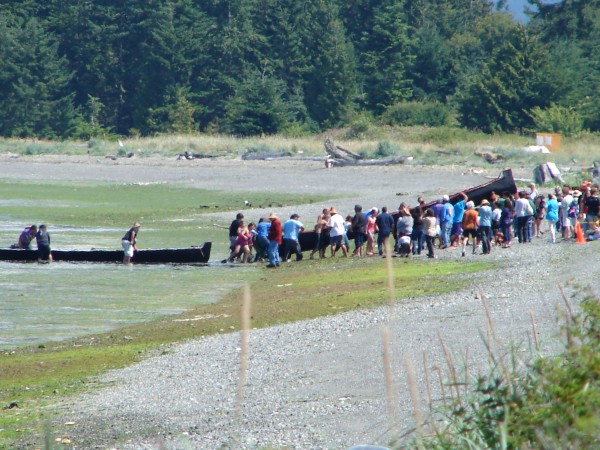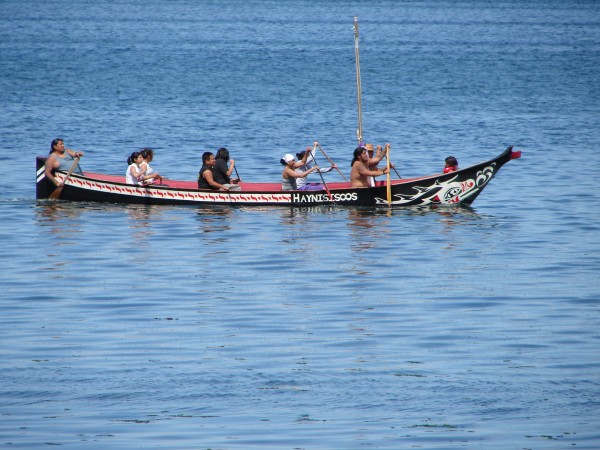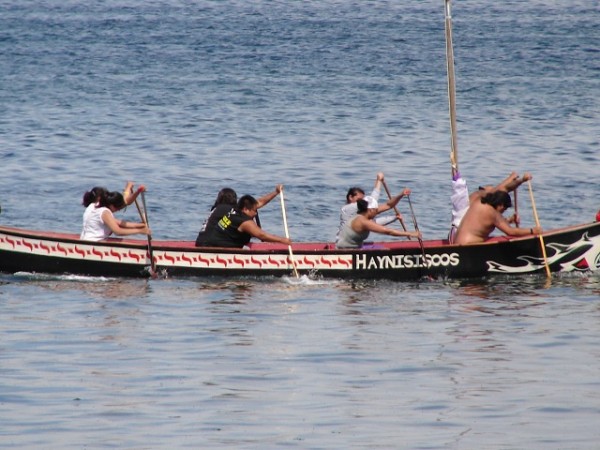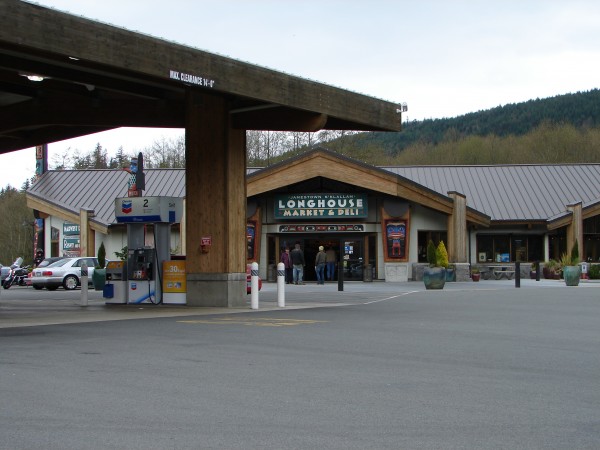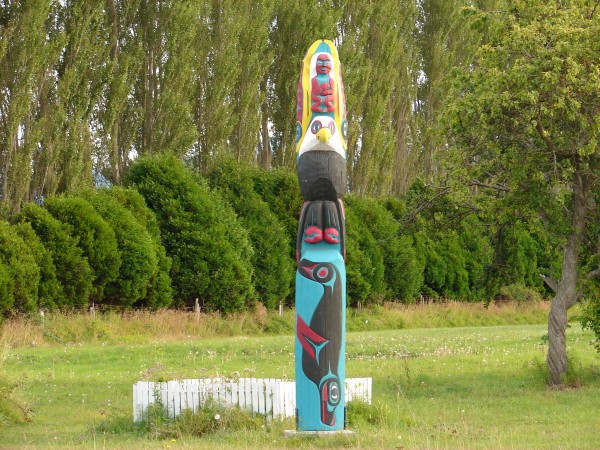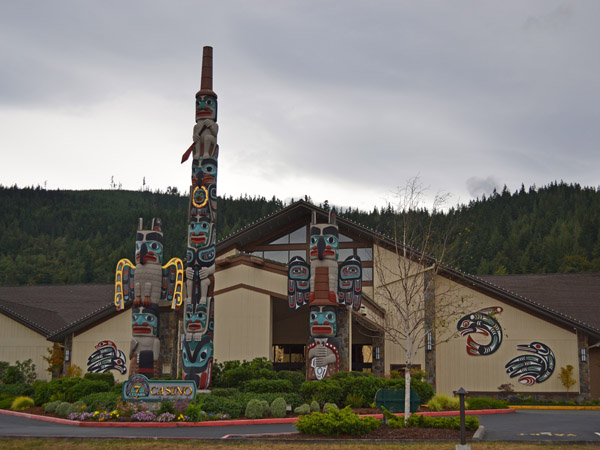
Totem poles are part of the First Nations heritage in the Pacific Northwest. The Jamestown S’Klallam Tribe, centered in Blyn, just east of Sequim, commissioned a master carver, Dale Faulstich and a carver/painter, Nathan Gilles, and many volunteer carvers to produce totems that grace their tribal operations.
The poles tell stories: of history, of religious, traditional, and cultural folklore. The figures carved into totems can represent people, animals, spirits, and events. Though nature is often representated in totem art, the pole immediately below on the right is a representation of elements the tribe calls into play for the success of the 7 Cedars Casino where it is located. It includes a financier portrayed, not accidentally, as a bird of prey. And at its top government oversight is represented in the form of a mouse, described as “the little rodent that eats at every man’s table.”
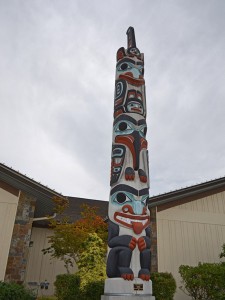
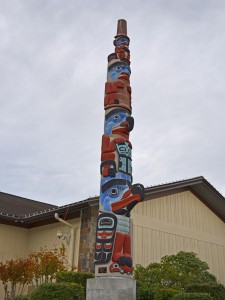
The Casino has a striking array of totem poles that primarily represent the art of the Coast Salish Tribes. But there are also four that show the carving style of regional tribes of north of here, in British Columbia. The pole at left is carved and painted in the Haida style and the one at the right is carved in the Nuxalt style.
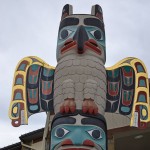
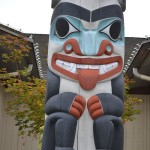
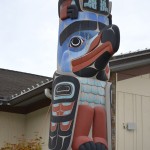
Here are details of some of the poles.
The tribe is succeeding in its casino venture. In recent voting conducted by the local Peninsula Daily News the 7 Cedars Casino won “Best of Olympic Peninsula” in the “Best Buffet” and “Best Dancing” categories.
I’ll post examples of other S’Klallam totem art in the coming days, including photos of the workshop where carving is done.
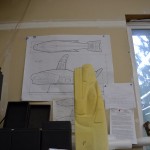 S’Klallam tribal art is not confined to totem poles. There is a carved rendition of a killer whale located at the north campus of the S’Klallam Tribal Center in Blyn. To the right are drawings of the piece as planned and a foam carving of its front end. The photo is taken in the Tribe’s Carving Shed. Below is the finished piece as it stands today.
S’Klallam tribal art is not confined to totem poles. There is a carved rendition of a killer whale located at the north campus of the S’Klallam Tribal Center in Blyn. To the right are drawings of the piece as planned and a foam carving of its front end. The photo is taken in the Tribe’s Carving Shed. Below is the finished piece as it stands today.